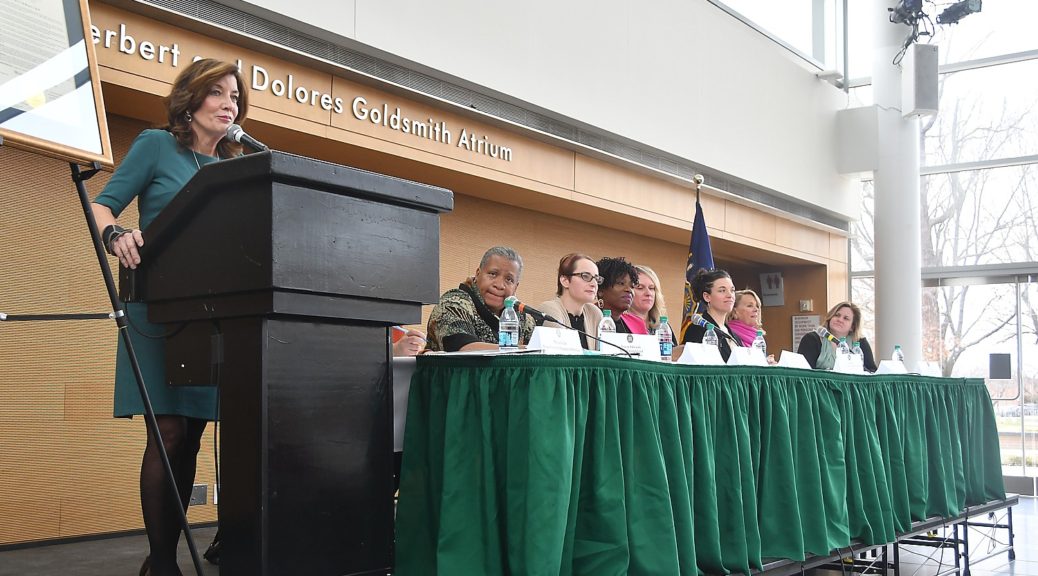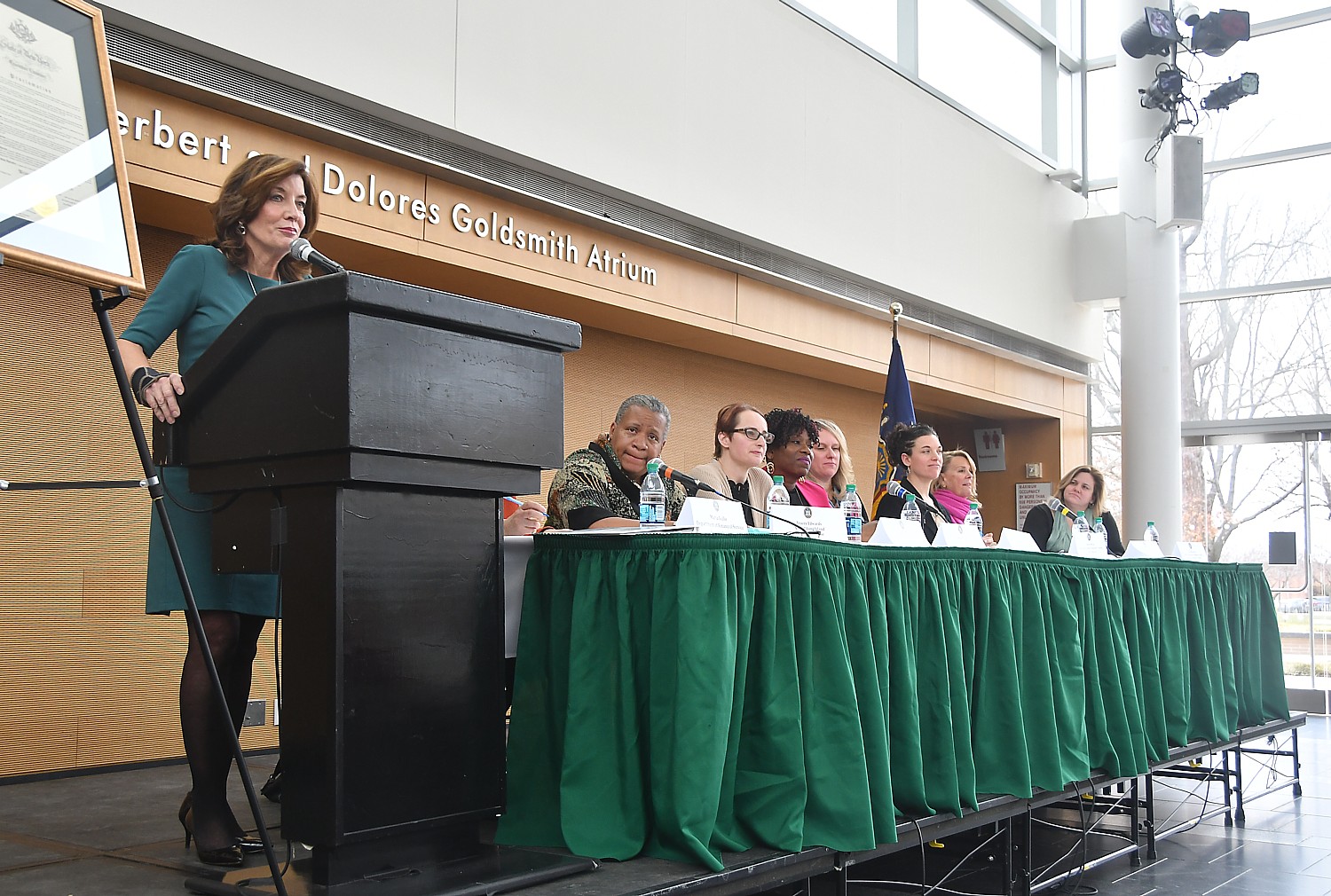This fact sheet detailing new actions by the Biden Administration to advance racial and educational equity, announced on the 70th anniversary of the landmark Brown v. Board of Education Supreme Court decision, was provided by the White House:

President Biden believes every student deserves access to a high-quality education that prepares them to be the next generation of leaders. Today, on the 70th anniversary of the landmark Brown v. Board of Education (Brown) decision, which outlawed racially segregated schools – deeming them unequal and unconstitutional – the Biden-Harris Administration highlights new actions with the release of additional funding and resources to support school diversity and advance the goal that all students have access to a world-class education.
Research shows that racial achievement gaps are strongly associated with school segregation, in turn because schools with high concentrations of Black and Latino students receive fewer resources. The desegregation of schools that followed Brown led to a 30 percent increase in graduation rates for Black students and a 22 percent increase for Latino students. As school districts were released from court-ordered desegregation, research shows that in the 1960s and 1970s, school integration increased rapidly, but that trend has reversed in the past two decades when both racial and economic segregation increased. For example, segregation between white and Black students is up 64 percent since 1988, while segregation by economic status has grown by 50 percent since 1991. According to the U.S. Department of Education’s State of School Diversity Report, racially and socioeconomically isolated schools often lack critical resources and learning experiences and opportunities that prepare students for college and career success. The Department of Education report found that three in five Black and Latino students and two in five American Indian/Alaska Native students attend schools where at least 75% of students are students of color and 42% of white students attend schools where students of color make up less than 25% of the population.
The Biden-Harris Administration is committed to ensuring the educational success of every child, and to address racial segregation in our schools that leads to worse educational outcomes for children, including through investments in local efforts to increase diversity and equal opportunity. The Administration is focused on academic acceleration and has made record levels of investment in K-12 schools and institutions of higher education to help improve opportunity for all. This includes supporting districts as they work to strengthen and diversify the education profession, enrich educational experiences, and improve school climate and conditions for robust learning.
New Actions to Advance Racial and Educational Equity
To advance racial and educational equity and continue the work of Brown to support educational opportunity for all students, the Biden-Harris Administration announced the following new actions today:
- New Magnet School Grants. The Department of Education’s Magnet Schools Assistance Program (MSAP) will invest $20 million in new awards for school districts in Arkansas, Colorado, Florida, Kentucky, Louisiana, North Carolina, and Texas to establish magnet programs designed to further desegregate public schools by attracting students from different social, economic, ethnic, and racial backgrounds. The President’s 2025 budget request includes $139 million for MSAP and $10 million to continue investments in the Fostering Diverse Schools program.
- Establishing a new technical assistance center to help states and school districts provide more equitable and adequate approaches to school funding. The U.S. Department of Education announced a new Technical Assistance Center on Fiscal Equity as part of the Comprehensive Centers Program. The Center on Fiscal Equity will provide capacity-building services to support states and school districts build equitable and adequate resource allocation strategies, improve the quality and transparency of fiscal data, and prioritize supports for students and communities with the greatest need.
- New Data on Equal Access to Math and Science Courses. The Department of Education Office for Civil Rights is releasing a new Civil Rights Data Collection report highlighting students’ access to and enrollment in mathematics, science, and computer science courses and academic programs, drawing from information in the 2020-21 Civil Rights Data Collection (CRDC). The report reflects stark continuing racial inequities in access to math, science, and computer science courses for students in high schools with high concentrations of Black and Latino students.
- Preserving African American History. To further advance the President’s Executive Order on Promoting the Arts, the Humanities, and Museum and Library Services, the Administration is launching an interagency process to develop new actions by the Federal Government to preserve African American history – including preserving historic sites, protecting and increasing access to literature, and ensuring the public, including students, has continuing access to resources. This effort will bolster African American history and culture as integral, indelible parts of American history.
Investing in Underserved Schools
- Under the American Rescue Plan, the nation’s schools received $130 billion in funding – the most in our Nation’s history – with a focus on undeserved schools. The American Rescue Plan also included new requirements that have driven nearly $800 million in State additional education funding, above and beyond the federal investment, to the most underserved school by protecting schools with high rates of poverty from reductions in State and local education funding.
- To date, the Biden-Harris Administration has secured nearly $2 billion in additional Title I funding to support our schools with the highest need, for a record $18.4 billion in annual funding.
- The Biden-Harris Administration has also increased funding for Full-Service Community Schools five-fold, from $30 million in Fiscal Year (FY) 2021 to $150 million in FY 2024 so that underserved schools, including those that serve a majority of students of color, have the additional resources they need to help deliver more services to students and their families, such as health care, housing, and child care, to close resource and opportunity gaps.
Increasing Teacher Diversity
Research indicates that educator diversity can improve student achievement and help close achievement gaps. For example, one study found that Black students randomly assigned to at least one Black teacher in grades K-3 were nearly 19% more likely to enroll in college than their same-school, same-race peers.
- The Administration is prioritizing efforts to increase educator diversity across 15 competitive grant programs that support teacher preparation, development, recruitment, and retention. These programs awarded nearly $450 million to 263 grantees, 92 percent of which were to grantees that addressed specific priorities related to educator diversity.
- The Administration secured and awarded a total of more than $23 million in first-time ever funding for the Augustus F. Hawkins Centers of Excellence Grant program which provides grants to Historically Black Colleges and Universities (HBCUs), Tribally Controlled Colleges and Universities (TCCUs), and Minority Serving Institutions (MSIs) for teacher preparation programs to increase the number of well-prepared teachers, including teachers of color and multilingual educators.
Strengthening School Diversity
- During this Administration, the Department of Education is investing more than $300 million in programs that increase school diversity This includes increased investment in the Magnet Schools Assistance Program (MSAP), which aims to reduce racial isolation, including by creating highly effective schools, and the creation of the Fostering Diverse Schools Demonstration Program (FDS), a new initiative to increase school socioeconomic diversity, which awarded more than $14 million in new grants.
- In August 2023 after the Supreme Court effectively ended affirmative action in college admissions, the Department of Education released a Dear Colleague Letter on Race and School Programming to guide schools on lawful programs to promote racially inclusive school communities and, along with the Department of Justice, a Dear Colleague Letter and a Questions and Answers Resource to help colleges and universities understand the Supreme Court’s decision as they continue to pursue campuses that are racially diverse and that include students with a range of viewpoints, talents, backgrounds, and experiences. The Department of Education published a resource summarizing specific guidance describing Federal legal obligations to ensure that all students have equal access to education regardless of race, color, or national origin.
- The Department of Education issued a new rule requiring, among other things, many Charter School Program applicants to assure that proposed charter schools would not negatively affect any desegregation efforts in the communities in which charters are to be located.
Closing the School Readiness Gap
Because of the legacy of discrimination, Black children start school on average nearly seven months behind their white peers in reading. One study finds that one year of universal high-quality pre-K could eliminate most of that gap. Others indicate that students who go to preschool are nearly 50% more likely to finish high school and go on to a college degree. Each of the President’s budgets have included proposals that would provide preschool to every four-year-old in the country. In addition:
- President Biden has secured an additional $1.5 billion for Head Start and nearly a 50% increase in funding for the Child Care & Development Block Grant (CCDBG) program, which helps low-income families afford child care. Approximately 30% of children and families receiving high-quality Head Start services are Black and close to 40% of families benefiting from CCBDG are Black.
- The American Rescue Plan provided $24 billion to stabilize child care. Over 44% of programs that received assistance were owned or operated by people of color and 53% of providers receiving stabilization funds were operating in the most racially diverse counties.
The Department of Education released guidance on how districts can leverage the increases the President has secured for Title I to expand access to high-quality preschool services, including through partnerships with Head Start programs. This is the first Department of Education preschool guidance in more than a decade.



